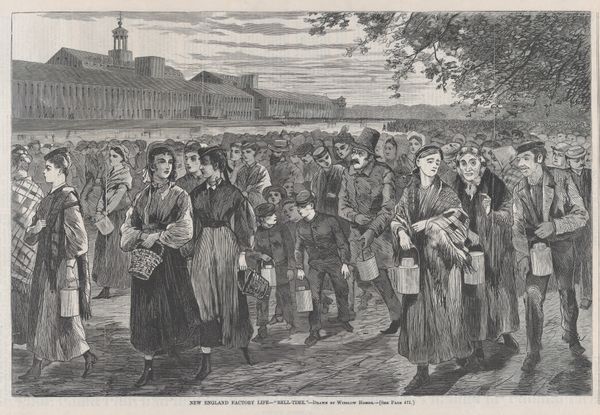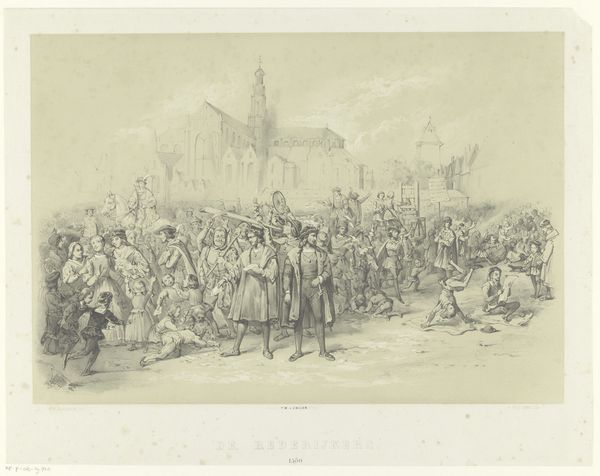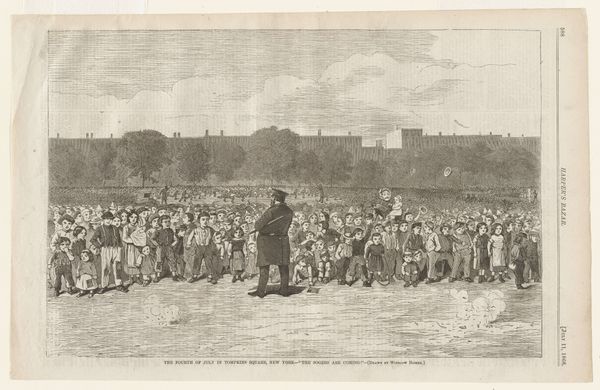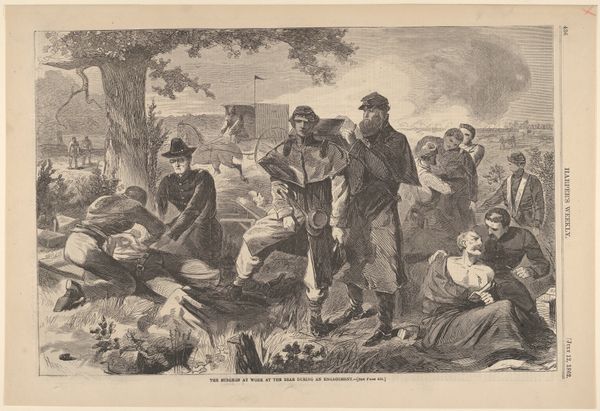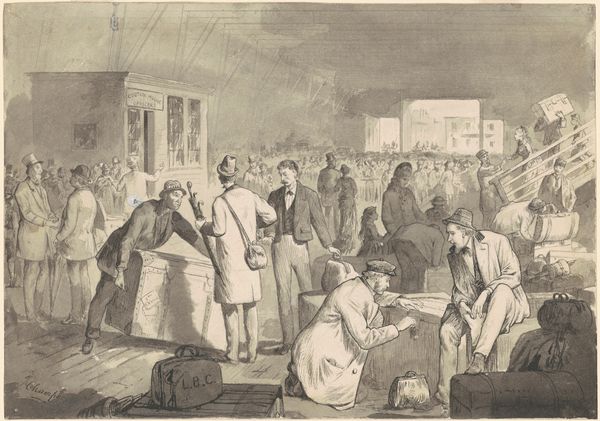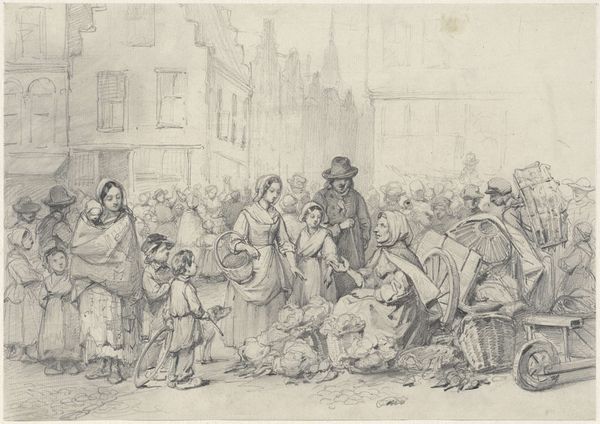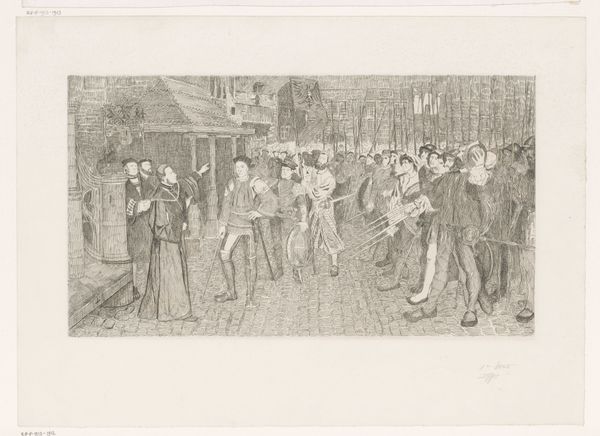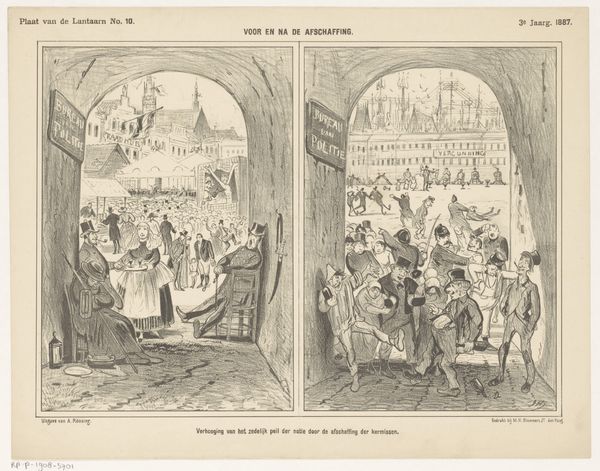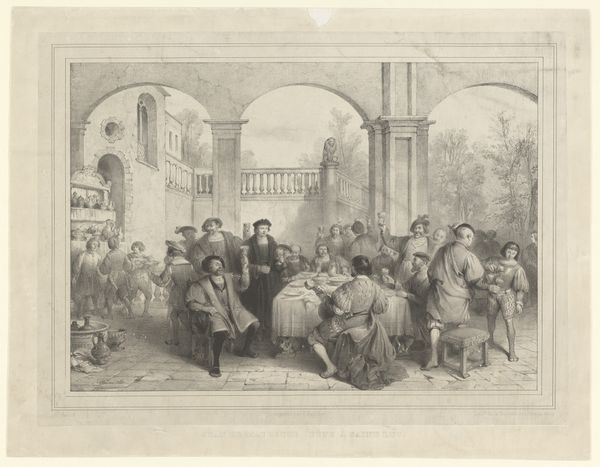
print, woodcut, wood-engraving
# print
#
landscape
#
woodcut
#
united-states
#
watercolour illustration
#
genre-painting
#
wood-engraving
Dimensions: 9 1/4 x 13 7/8 in. (23.5 x 35.2 cm)
Copyright: Public Domain
Curator: Winslow Homer's "New England Factory Life—Bell-Time," a wood engraving created in 1868, depicts workers leaving a factory. The original is held here at the Minneapolis Institute of Art. Editor: There’s an almost dreamlike quality to this bustling industrial scene, especially with the contrast between the sharp, angular factory in the background and the softer figures in the foreground. It’s an evocative composition. Curator: Homer's illustrations often appeared in magazines like "Harper's Weekly," offering glimpses into contemporary American life. What strikes me about this image is its portrayal of industrialization's impact on ordinary people. We see men, women, and even children streaming out of the factory, suggesting labor conditions during that period. Editor: Absolutely. This wasn’t a landscape romanticizing the virtues of labor, it reflects the lives of the working class and specifically the women that dominated the textile industry during this time. How complicit was an organization like Harper’s in upholding social order in the reconstruction era? Did the magazine use these pieces as an overt endorsement of reconstruction? What kind of power dynamic are we observing in these kinds of transactions? Curator: These images definitely served to document and also shape public perceptions, given the reach of illustrated publications during the mid-19th century. What's also interesting to me is Homer's compositional skill; how the repetitive lines of the factory building mirror the regimented lives of the workers. Editor: It's that tension between the individual and the industrial machine that really captivates me. Each figure has its own character but is caught up in the overwhelming current, heading to or from work. Are these pictures like documents or a critical expression about modern problems? Do these people have access to social mobility, or does this industrial work sentence them to labor? There are no definitive answers, but these illustrations offer an accessible means to interrogate issues of labor from a distance. Curator: These are powerful points and illustrate the enduring importance of art in helping us consider not only where we have come from, but what work still remains in ensuring an equitable society. Editor: Art from this period has taught me to remain diligent, question the powers that be, and listen to the unheard voices, using art as a springboard to propel future social movements.
Comments
No comments
Be the first to comment and join the conversation on the ultimate creative platform.


